The Visual Guide to
Bubaline Reproduction
Reproductive Technology: In Vitro Fertilization
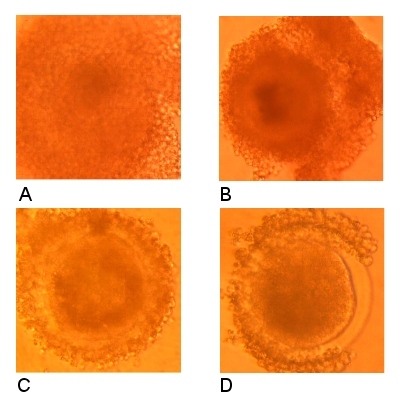
Classification of Recovered Oocytes.
Classification of oocytes after recovery. A. Grade-1 oocyte. The oocyte is surrounded by many layers of cumulus cells. B. Grade-2 oocyte. The oocyte is irregularly surrounded by several layers of cumulus cells. C. Grade-3 oocyte. The oocyte is surrounded by few layers of cumulus cells. D. Grade-4 oocyte. The oocyte is incompletely surrounded by a few layers of cumulus cells. Part of the oocyte is denuded.
Misra AK (2005)
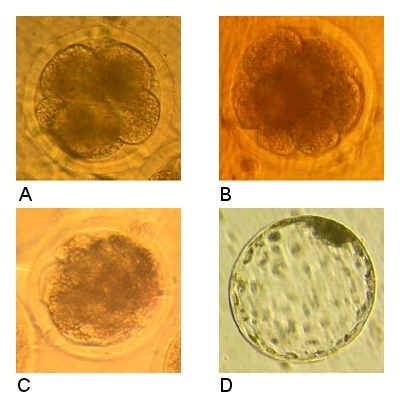
Stages of IVF Embryo Development.
Developmental stages of embryos after in-vitro fertilization. A. 8-cell embryo (Stage 2). B. 16-cell embryo (Stage 3). C. Morula (Stage 4). D. Expanded Blastocyst (Stage 7). All are excellent to good quality.
Misra AK (2005)
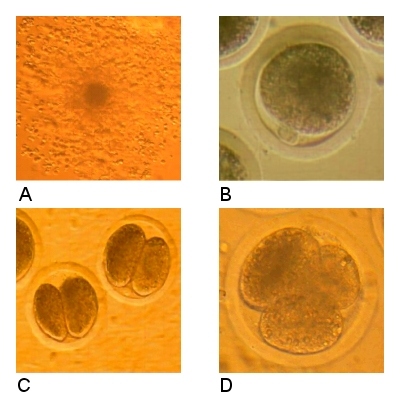
Maturation of Oocytes.
Maturation of oocytes and embryo development after in-vitro fertilization. A. Matured oocyte (cumulus cell expansion). B. Matured oocyte (release of first polar body). C. 2-cell embryos. D. 4-cell embryo.
Misra AK (2005)
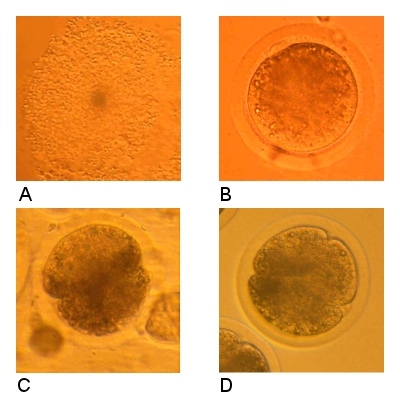
Development after Chemical Activation.
Maturation of oocytes and development of the embryos after chemical activation. A. Matured oocyte (cumulus expansion). B. Matured oocyte (release of first polar body). C. 2-cell embryo. D. 4-cell embryo.
Misra AK (2005)
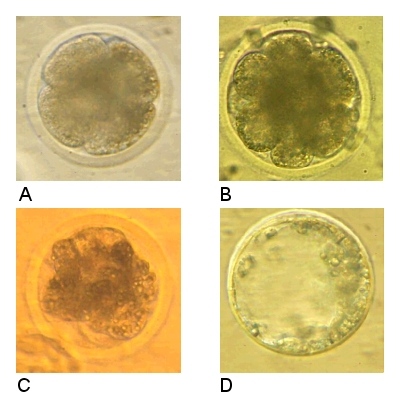
Developmental Stages of IVF Embryos.
Stages of embryo development following chemical activation. A. 8-cell embryo / Stage 2. B. 16-cell embryo / Stage 3. C. Morula / Stage 4. D. Expanded blastocyst / Stage 7.
Misra AK (2005)
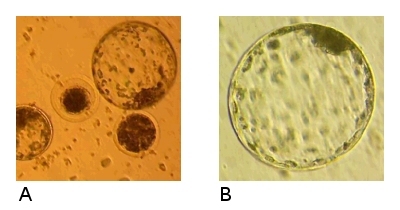
Expansion of Parthenogenic Blastocyst.
A. Expansion of the blastocyst. B. Expanded blastocyst.
Misra AK (2005)
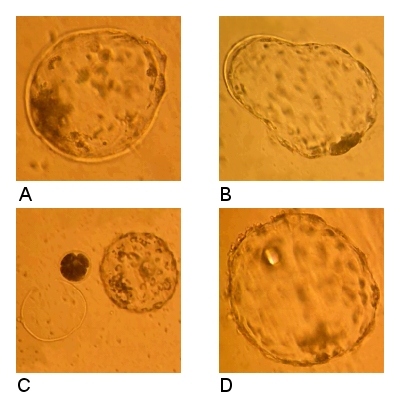
Hatching of Parthenogenic Blastotcysts.
A. Early hatching of a blastocyst (Stage 8), the zona is cracked. B. Hatching of the blastocyst. The embryo has almost entirely shed the zona. C. Hatched blastocyst with empty zona. D. Hatched blastocyst by itself.
Misra AK (2005)
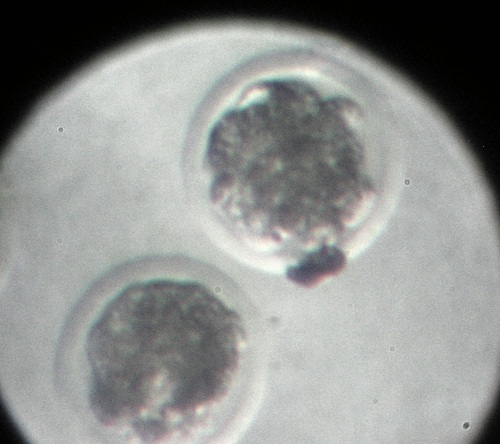
Vitrified IVF Morulas.
Vitrified morulae after thawing. The embryo at the top is a Grade 4, Code 1 (>85% viable embryo mass). The embryo at the bottom is a Grade 4, Code 2 (50 to 84% viable embryo mass).
Zambrano-Varon J (2012)
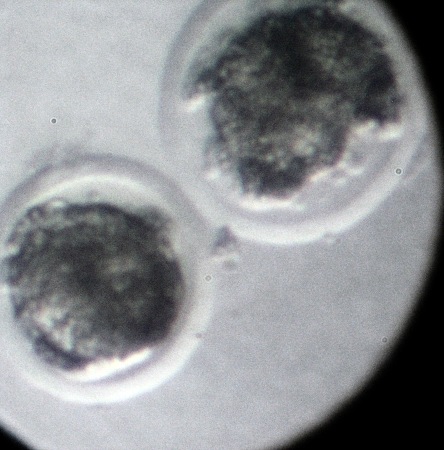
Vitrified IVF Morulae.
Vitrified morula after thawing. The embryo at the top is a Grade 4, Code 2 (50 to 84% viable embryo mass), the one below is a Grade 5, Code 1 (>85% viable embryo mass).
Zambrano-Varon J (2012)
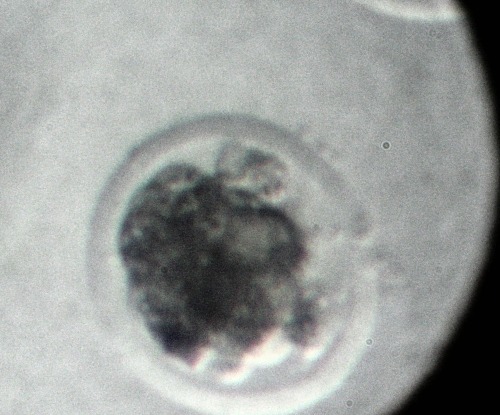
Vitrified IVF Morula.
Vitrified morula after thawing. Grade 4, Code 2 (50 to 84% viable embryo mass).
Zambrano-Varon J (2012)
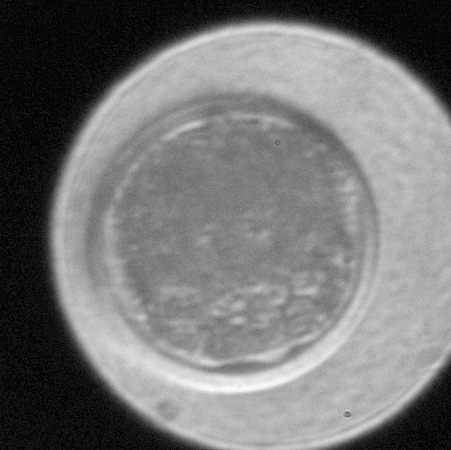
Vitrified Early Blastocyst.
Vitrified early blastocyst after thawing. Grade 5, Code 1.
Zambrano-Varon J (2012)
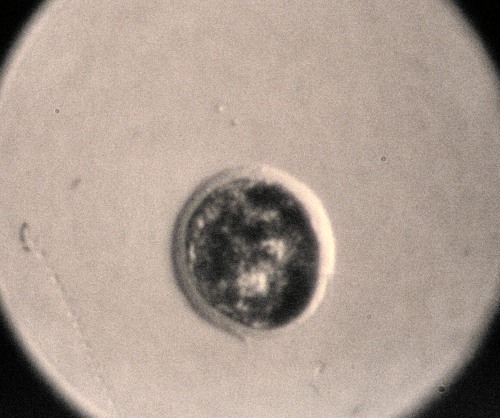
Vitrified IVF Blastula.
Vitrified blastula after thawing. Grade 6, Code 1 (> 85 % viable embryo mass).
Zambrano-Varon J (2012)
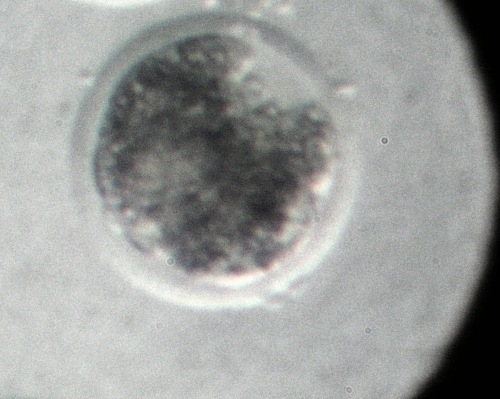
Vitrified IVF Blastula.
Vitrified blastula after thawing. Grade 4, Code 2 or 3. Well organized blastomeres but no blastocele. There are also vacuoles and there is cellular detritus likely as a result of the freezing and thawing process.
Zambrano-Varon J (2012)
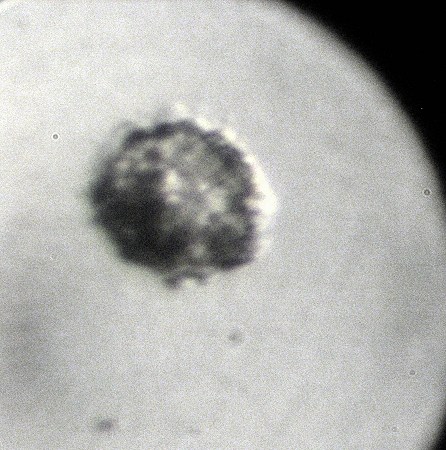
Vitrified IVF Blastula.
Vitrified blastula without the zona pellucida after thawing. Grade 6, Code 2.
Zambrano-Varon J (2012)
